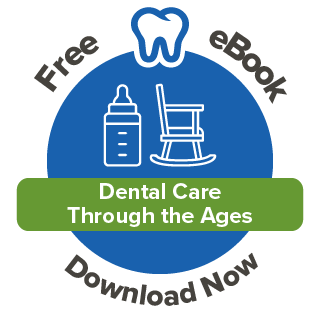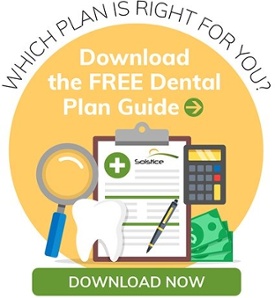By Andrew Hickey on Mar 31, 2023 @ 11:44 AM
Are you looking for a dental plan? You’re not alone. There are an estimated 77 million adults in the United States do not have dental insurance, according to a CareQuest study. 16 percent of those adults reported that they hadn’t seen a dentist in more than five years, and one in four said their overall health has worsened over the past year.
Key takeaways:
- Many people avoid the dentist – but it can affect your overall health and wallet in the future.
- Consider the services you need and what the plan covers – this will help you choose dental insurance.
- You can learn standard dental insurance terms.
- Look at the requirements and restrictions on each plan and compare.
If you haven’t prioritized dental insurance or have avoided the dentist to try and save money, you could be doing yourself a disservice. What happens if you need extensive dental work?
Luckily, there are various dental insurance options out there that could fit your budget and keep you healthy. The issue is that there are differences to keep in mind with so many plan types. So, we’re here to help you make the best choice for you and your family when looking for a dental plan.
Make choosing dental insurance easier by understanding the importance of oral health and knowing about plan types and the services you will need coverage for.

The oral health-overall health connection:
Avoiding the dentist is easy, whether you’re worried about cost or have anxiety about getting dental work done. It’s understandable and very common. However, you could put yourself at greater financial risk if a dental issue develops and you need extensive work (like oral surgery). Additionally, studies confirm that poor oral health can lead to gum disease and other severe conditions, such as heart disease and diabetes. That’s where dental insurance and taking care of your teeth and gums daily is essential. Plus, there are ways to manage your dental anxiety so that it’s not as scary.

What you should be looking for:
When enrolling in a dental plan, you will want to look at the types of dental services and procedures covered. These are broken into three categories: preventive, primary, and major. Also, compare the various co-pays for the services you will need the most. Knowing this information will allow you to narrow down your insurance choices.
- Preventive dental care includes regular checkups, cleanings, and X-rays. It can lead to early detection and treatment of cavities, a leading dental disease among children. Routine cleanings can help prevent gum disease. It is encouraged by most dental insurance plans, as it can reduce the need for more expensive dental work and possible emergency room visits. So, plans will typically pay for these services at 100%. They can be covered at intervals, such as yearly or every six months. Any other dental work outside these services usually has an associated co-pay after you’ve paid your deductible.
- Basic dental services: These services may be required if your dentist finds anything that needs treatment during your routine exam. Basic care includes extractions, deep cleanings, and fillings for cavities. You will typically split the cost with the insurance, which could be 50-80%.
- Major dental services: The most extensive dental procedures include bridges, crowns, oral surgery, and dentures. They will have the highest out-of-pocket cost, which the plan will split with you at 30-50%.

More dental services and terms to be aware of:
- Pre-existing conditions and waiting periods: Medical insurance has protections for people with preexisting conditions. Regarding dental plans, you will want to look at their policy for preexisting conditions. For example, you have missing teeth and need extensive dental work done. Some plans may require you to wait until you finish the work, or it may be excluded from the plan altogether. Waiting periods can also be extended to how often you receive routine care and other services. You will want to know if you can start getting dental care immediately or if you must wait before using your benefits for some or all dental services.
- Restorative care involves extensive dental work, like crowns and fillings, and usually out-of-pocket payment.
- Endodontic procedures focus on caring for the pulp and roots of your teeth and are generally more complex. A root canal is an endodontic procedure.
- Periodontics: These procedures prevent and treat gum infection and disease. Scaling and root planing (or deep cleaning) are the most common types of periodontic treatment.
- Prosthodontics: This refers to the diagnosis, planning, and treatment of dentures or dental prostheses. These procedures are typically for people with missing teeth who are not a good candidate for dental implants.
- Orthodontics: This treats teeth problems with braces, wiring, or brackets. Not all dental plans cover orthodontia, so you will want to know any lifetime maximums, age limits, or other restrictions.
- Anesthesia: Your dentist may recommend general anesthesia for tooth extractions, dental implants, and jaw surgery. You will want to see if your dental plan has any allowance for anesthesia or if you would have to pay those costs in full.

Key dental plan features to understand:
Reading about dental insurance can be like looking at a foreign language. If you know what the terms mean, you can make more informed choices.
- What is the annual maximum?
This is the maximum dollar amount your dental insurance will pay for services during the year or a specific timeframe. It is a typical feature of dental PPO plans. Consider the services you and your family may need and if you will meet or exceed that annual maximum. Some plans have unlimited maximums, and others have rollover benefits, which could be used the following year. - What insurance plans does your dentist accept?
Finding the right dentist can be a challenge. So, you will want to know if you can stay with your current dentist under your insurance plan. This can change each year, so it’s always worth double-checking. It may determine what plan you choose. - Do the plans offer both in-network and out-of-network coverage?
There is in-network-only insurance, like DHMO plans, where dental services are just covered by dentists who are part of the plan’s network. There could be the option to nominate your dentist to the network. Then, some plans provide better discounts for going in-network but also offer the flexibility of out-of-network benefits (like DPPO plans). - Does the plan require you to be assigned to a primary dentist?
Standard dental HMO plans typically require you to select a general dentist and have them assigned to you on your insurance card. You may have the option to change the primary dentist; however, there could be time limits, or you could be required to call the insurance company. - Are the dentists on the plan easy to get to?
If you are choosing a dentist or need to find a new one, you will want to ensure the dentists who accept your plan are easy to get to from home, school, or work. This will make life easier for all of you.

Types of dental plans:
- Dental Health Maintenance Organization (DHMO): How a DHMO plan works can depend on the carrier. With some carriers, these plans require you to choose and/or be assigned to one dentist to coordinate all your oral health needs. If you need to see a specialist for dental implants, you must get a referral from your dentist. Other carriers allow DHMO members to access and select any network provider without being assigned to their office roster. This reduces your waiting time to be seen by a dentist and allows for a higher standard of care and customer experience. These plans require you to go specifically to a dentist contracted with the insurance.
- Dental Preferred Provider Organization (DPPO): Network dentists agree to a negotiated fee schedule as payment for their services, and members are offered added discounts and incentives to use dentists who participate within the network. On a DPPO plan, you may choose to receive services from any dentist, but you will experience the highest level of savings by selecting an in-network dentist.
- Dental Discount Plans: Dental discount plans are an affordable alternative to traditional dental insurance options. These plans are not insurance; instead, they offer access to dental services at a discounted rate. So, in return for the monthly fee, you can choose from a network of dentists who typically give between 10 to 60 percent rate reductions for certain services. For example, a $1,000 crown might only cost $600 for a member of a discount dental plan. Instead, members can access an extensive network of participating dentists who have agreed to offer their dental services at discounted fees. Discount dental plans offer No annual limits. Plan members have discounts on most dental care services throughout the year. No claims. Plan members show their membership card at a participating dentist's office for discounts on most dental services. Remember that you may be responsible for a more significant portion of the cost of treatment.
- Fee-for-Service Plans: Members receive care from the dentist of their choice. The co-payment at the dentist's office is based on a fee for each service rendered.
The bottom line is that a healthy mouth can help you maintain your overall health and save you money on expensive dental treatments. That is why having dental insurance is essential. If you take care of it now, you won’t have to worry about it later.
Want to have Solstice benefits?
Call our sales team at 877.760.2247 or email Sales@SolsticeBenefits.com
Already have Solstice benefits?
See your plan details by going to https://www.mysmile365.com/ or calling us at 1.877.760.2247.





comments